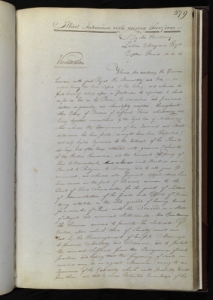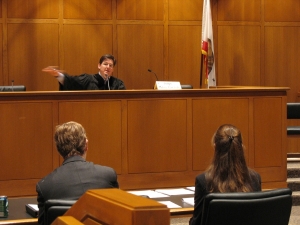By: Andrew L. Berrier*
Licensed Application End User License Agreement
The Products transacted through the Service are licensed, not sold, to You for use only under the terms of this license, unless a Product is accompanied by a separate license agreement, in which case the terms of that separate license agreement will govern, subject to Your prior acceptance of that separate license agreement. The licensor (“Application Provider”) reserves all rights not expressly granted to You. The Product that is subject to this license is referred to in this license as the ‘Licensed Application.’
a. Scope of License: This license granted to You for the Licensed Application by Application Provider is limited to a non-transferable license to use . . . .[1]
Introduction
This is not likely to be the first time you have read an agreement such as the one above. Given the sheer number of software applications and other digital content that many people interact with on a daily basis, an average person may be a party to an untold number of these sorts of agreements for items he uses every day. A growing shift toward digitally transmitted content, such as eBooks, MP3s, software, and digital movies, has caused a shift in how consumers view their purchases—when a person downloads something from the Internet, is it no different from buying an analogous good from a brick-and-mortar store? What then is to be made of the pop-up legal forms consumers often hastily agree to in order to access their new software?
For over a century, the body of copyright law called the first sale doctrine has worked to strike a balance between the rights granted to a copyright owner and the purchaser of copyrighted goods. According to the doctrine, a copyright owner’s exclusive right to control distribution of a copy of a work ends with that copy’s first lawful sale or transfer.[2] After the first sale, the new owner of the copy is generally free to sell or transfer the copy as he sees fit.[3] Given the important balance it strikes, the first sale doctrine has been regarded with vital importance and has helped build legal foundations for institutions ranging from local second-hand bookstores to eBay.[4] Today this venerable legal doctrine stands at an uncertain crossroads—the body of law is clear and well established with respect to tangible works, yet the new digital economy has thrown many of the past definitions of the first sale doctrine in flux. As such, there exists legal uncertainty as evidenced by cases like Vernor v. Autodesk, Inc.[5] that attempt to clarify a growing legal problem—how should we treat our digital goods?
This Note analyzes the impact of the Ninth Circuit’s recent decision in Vernor and argues that while Vernor could hold many pitfalls for consumer protection in today’s market, as more sales move from transfers of tangible copies to models of digital distribution, decisions like Vernor could help foreshadow a new body of law for a new type of sale. Part I provides historical background for the first sale doctrine and addresses some of the current market realities straining the idea of first sale. Part II analyzes the factual landscape of Vernor and examines the rationale of the Ninth Circuit in crafting its groundbreaking three-factor Vernor test. Finally, Part III discusses the different impacts the Vernor decision could have, the parties which might be most affected by different interpretations of Vernor, and what the future could and should hold for this decision’s impact on a century-old body of law.
I. Background
To understand recent changes to the first sale doctrine, it is useful to gain some perspective on the history of this legal theory. The first sale doctrine was initially laid out in the 1908 Supreme Court decision Bobbs-Merrill Co. v. Straus.[6] In Bobbs-Merrill, the Court considered the scope of how far a copyright holder’s rights may extend.[7] Specifically at issue was whether copyright law permits an owner to exert control over a purchaser’s resale of a copyrighted work, or if the rights of a copyright holder to control distribution were limited to the initial sale.[8]
A. Bobbs-Merrill Co. v. Straus: First Sale By the Book
In Bobbs-Merrill, the plaintiff publisher sought to affect the resale market of its books by including the following phrase on the inside cover of every new book it sold: “The price of this book at retail is $1 net. No dealer is licensed to sell it at a less price, and a sale at a less price will be treated as an infringement of the copyright.”[9] Subsequently, the defendant sold plaintiff’s books for less than $1, and the plaintiff sued for copyright infringement based on the copyright holder’s exclusive right to vend.[10]
The plaintiff’s main theory was that the phrase inside the book’s cover controlled the resale of the book, creating a license with the purchaser—a right allowed within a copyright holder’s right to vend or otherwise sell its product as it sees fit.[11] Discarding this argument, the Supreme Court held that the plaintiff’s note did not constitute a license agreement and that any exclusive right of an original copyright holder to vend extends only to the initial sale.[12] In making its conclusions, the Court held that “copyright statutes, while protecting the owner of the copyright in his right to multiply and sell his production, do not create the right to impose, by notice, such as is disclosed in this case, a limitation at which the book shall be sold at retail by future purchasers . . . .”[13] As such, the statutory right to sell did not also create a similar right to limit resale—the right to vend was limited to the first sale of the good. This early explanation of the first sale doctrine would be codified one year later in the Copyright Act of 1909.[14]
Since the passage of the 1909 Copyright Act,[15] the first sale doctrine has undergone a notable degree of evolution. The 1976 Copyright Act expanded the first sale doctrine to include not only any purchaser of a good, but also granted any “owner” of a lawfully made copy of a good the right “without the authority of the copyright owner, to sell or otherwise dispose of the possession of that copy. . . .”[16] The 1976 statute also made clear that this doctrine does not apply when possession is a result of rental or loan, unless the copyright owner authorizes otherwise.[17] Taken together, sections 109(a) and 109(d) of the 1976 Copyright Act outline that the determining factor applicable to the use of the first sale doctrine is whether the recipient has rightful ownership of a copy of the good.
However, while the 1976 revision clarifies that possession should arise from rightful ownership, and not from rental or loan, the first sale doctrine applies not only to the ability of the new owner to make subsequent sales of the copy, but also to the ability of that owner to subsequently lend the copy to others, such as with libraries or video rental companies.[18] As noted in the 1976 Act’s legislative history, “[a] library that has acquired ownership of a copy is entitled to lend it under any conditions it chooses to impose,” similar to how a legitimate owner may choose to sell under any conditions it chooses to impose.[19] Nevertheless, while the first sale doctrine limits the distribution right guaranteed to copyright owners, it does not limit the other guaranteed rights of a copyright holder over reproduction, public display, public performance, and the creation of derivative works.[20]
Finally, an ultimate concern remains with the first sale doctrine—defining what goods actually fall within the doctrine’s scope. As the first sale doctrine deals with the selling or other disposing of a copy, it is vital to define what is and is not a copy under the Act. Under the 1976 statute, copies are defined as:
[M]aterial objects, other than phonorecords, in which a work is fixed by any method now known or later developed, and from which the work can be perceived, reproduced, or otherwise communicated, either directly or with the aid of a machine or device. The term “copies” includes the material object, other than a phonorecord, in which the work is first fixed.[21]
As such, the entire statutory framework underpinning the first sale doctrine has generally worked well where copies are fixed in a material object such as a printed book, DVD, or CD, but this framework becomes muddled when the works are digitally transmitted, such as an e-book download, streaming online video, or MP3 purchase.[22] This is largely because of the legal uncertainty as to whether the first sale doctrine applies to transactions that lack a material copy changing hands, or even sometimes, as Vernor makes an issue of, when a copy is an intangible object fixed in a tangible medium changing hands.
B. Modern Sales
The last decade has seen exponential growth in digital content delivery. Advances in file storage and broadband technology have met with copyright owners’ entrepreneurial efforts to generate new streams of revenue to satisfy consumer demand for convenience and choice.[23] Digital-delivery business models that may have seemed outrageous only a few years ago have now become dominant players in their respective fields. As a notable example, Apple’s iTunes music store has already surpassed ten billion song downloads in its eight-year history—in many ways supplanting traditional brick-and-mortar music stores—and iTunes’ software “app” sales have reached the 10 billion download mark in only two years.[24]
Without clear direction as to whether the first sale doctrine applies to digitally transmitted works, and because of the doctrine’s inapplicability where there is no transfer of ownership, copyright owners have increasingly stopped selling digital works outright. Instead, copyright owners have begun to offer digital works to consumers through a licensor/licensee relationship in order to impose restrictions on future use and transferability.[25] Such attempts by copyright owners are seen most notably in the formation of End User License Agreements (“EULAs”), which generally create “clickwrap” agreements where a user must agree to any and all terms proposed by the copyright owner in order to use the purchased product.[26] In many cases, the copyright owner attempts to retain full control over distribution rights by crafting an EULA that explicitly states the consumer is a licensee who has no ownership interest in the purchased copy of the work.[27] Thus, while a book may be purchased outright and owned by a consumer, in the eyes of copyright holders a digital copy of the very same book is not owned but merely licensed to the consumer.
In some situations, this licensor/licensee relationship in digital media allows copyright owners to retain powers that far exceed ordinary restrictions on future use by deleting outright the consumer’s copy of the work when circumstances warrant.[28] One of the most notorious examples of such an extension of a copyright holder’s powers occurred in 2009 when Amazon remotely deleted digital copies of the George Orwell novels 1984 and Animal Farm from Kindle users’ e-book devices after Amazon learned it could not offer digital copies of these works.[29] In doing so, Amazon acted entirely in accordance with its terms of use in effect at the time and chose to take the extreme step of deleting every copy possessed by paying customers to avoid litigation with Orwell’s publisher.[30]
II. The Case
As a result of the ambiguity between technological innovation and gaps in a century-old body of law, it is unclear what to make of the licensing practices of copyright owners who appear to use contract law to circumvent the first sale doctrine. Given such ambiguity in the law, consumers are left frustrated. With little recourse but to accept clickwrap agreements from copyright holders, consumers are moved to accept restrictive agreements without grasping the full implication of such action. These uncertain waters are explored in the recent Ninth Circuit decision Vernor v. Autodesk, Inc.[31]
Adding to this complexity stands the fact that Vernor involved material copies of software fixed in CD-ROMs and not content distributed digitally.[32] Despite this, the Ninth Circuit held that extensive EULA restrictions contractually imposed on the use of a material copy of software trump the first sale doctrine.[33] In effect, the decision in Vernor breaks from century-long jurisprudence dating back to Bobbs-Merrill upholding the applicability of the first sale doctrine to the transfer of a material copy of a work, including past first sale cases involving software.[34] Accordingly, Vernor extends the exploitable ambiguity of whether the first sale doctrine applies to digital copies back to material copies, merely because the copy in question is software on a CD-ROM.
A. A Tangled Factual Web
Autodesk Incorporated is the creator of the computer-aided design software, AutoCAD, which assists architects, engineers, and manufacturers in drafting plans and schematics for various projects.[35] As early as 1986, Autodesk began selling its AutoCAD software with a limited “software license agreement” (“SLA”) between Autodesk and the end user—an EULA.[36] The version of Autodesk’s AutoCAD software at issue in Vernor is Release 14, a program that was put on the market in 1997.[37] Autodesk holds registered copyrights for all versions of the software it produces, including Release 14.[38] Customers are required to accept Autodesk’s SLA before they are permitted to use the program, or may choose not to accept the SLA and return the software for a full refund.[39] Within the SLA are separate terms and conditions for different types of users, depending on the product a consumer has purchased.[40]
Autodesk’s SLA is, in many ways, ordinary to most software sales, in that it reserves the majority of rights to the copyright holder.[41] Specifically, the SLA for Release 14 states that Autodesk retains title to all copies and that the customer has a nonexclusive and nontransferable license to use Release 14, creating the typical licensor/licensee relationship between vendor and consumer.[42] Within the SLA are a number of transfer restrictions, prohibiting customers from renting, leasing, or transferring the software without Autodesk’s prior consent.[43] Additionally, the SLA imposes geographic transfer restrictions on consumers, including an explicit prohibition on transferring the software outside of the Western Hemisphere.[44] Finally, Autodesk’s SLA imposes significant limitations on how its product may be used by the consumer.[45]
Beyond merely stating all the rights reserved to Autodesk in the SLA, Autodesk also worked to preserve these rights by taking measures to actively enforce these SLA agreements.[46] Autodesk works to ensure every copy of its software is legitimate, including assigning unique serial numbers to each product and requiring the customer to input “activation codes” within a month of installation to continue using the software.[47] An activation code is only issued to a consumer after Autodesk authenticates the product’s unique serial number.[48]
In March 1999, Autodesk and Cardwell/Thomas & Associates, Inc. (“CTA”) came to a settlement regarding CTA’s unauthorized use of Autodesk’s Release 14 software.[49] Autodesk had licensed ten copies of Release 14 to CTA, and CTA had agreed to the terms of the SLA packaged with the software.[50] Shortly after this agreement, CTA upgraded from Autodesk’s Release 14 program to Autodesk’s AutoCAD 2000 program, and should have subsequently destroyed the copies of Release 14 as instructed by the SLA.[51] Instead, CTA sold four copies of Release 14 and their activation codes to plaintiff Timothy Vernor.[52]
Timothy Vernor ran an eBay store where he resold a number of different products to consumers online, and after purchasing the four copies of Release 14 from CTA, Vernor listed the software for sale on eBay.[53] Vernor was aware of the existence of the SLA, but, importantly, he never installed the software or agreed to the SLA’s terms.[54] When Autodesk became aware of Vernor’s actions Autodesk issued a Digital Millennium Copyright Act (“DMCA”) take-down notice[55] to eBay claiming copyright infringement.[56] In response Vernor filed a counter-notice challenging the validity of Autodesk’s claim.[57] Finally, Vernor brought an action against Autodesk to establish that his resale of the Release 14 software did not infringe on Autodesk’s copyright, requesting that the court rule that his actions were noninfringing due to the first sale doctrine.[58]
Upon hearing Vernor’s claim the district court granted summary judgment in favor of Vernor, declaring that Autodesk’s copyright was not infringed.[59] In making its ruling, the district court determined Vernor’s acquisition of the Release 14 software to be a transfer of possession rather than a license; therefore, the first sale doctrine applied and Vernor was not liable for copyright infringement.[60] In its rationale, the district court used United States v. Wise,[61] a Ninth Circuit case which dealt with the transfer of movie prints pursuant to distribution agreements. In Vernor’s case, the district court held that simply labeling something a license was not determinative because Wise dictated that all of the circumstances of the transaction must be analyzed.[62] In viewing all the circumstances, the key fact appeared to be that Vernor did not pay recurring fees for the use of the software, but rather made a one-time payment for the software itself, which implied a right of perpetual possession favoring the finding of a sale instead of a license.[63] Autodesk subsequently appealed this decision to the Ninth Circuit.[64]
B. Vernor in the Ninth Circuit
On appeal, the Ninth Circuit took a markedly different approach—both to the district court’s decision and to the majority of precedent outlaying the century-old first sale doctrine. Downplaying the district court’s focus on Vernor’s one-time payment for the software, the Ninth Circuit vacated and remanded, holding that the high level of specificity in Autodesk’s SLA license restrictions made Vernor a licensee rather than an owner of the software copies, despite a transaction of a tangible copy from producer to consumer that at first glance might appear to be a sale.[65]
1. Considerations of Wise and the MAI Trio, and a New Three-Factor Test
In order to determine whether a software consumer is an owner or a licensee, the court reviewed past Ninth Circuit decisions and created a new three-factor test, which it applied in Vernor.[66] The Vernor court concluded that precedent from Wise asked a factfinder to consider “all of the provisions” of an agreement to determine if a consumer is an owner or licensee of a software copy.[67] The court came to a markedly different conclusion than Wise, however, as to what provisions may do in such a licensing agreement and what weight to give to each.[68]
In addition to a discussion of Wise, the Ninth Circuit looked at three of its prior cases that also addressed issues of ownership or licensing of software, the “MAI trio.” The MAI trio consists of MAI Systems Corp. v. Peak Computer, Inc.,[69] Triad Systems Corp. v. Southeastern Express Co.,[70] and Wall Data, Inc. v. Los Angeles County Sheriff’s Department.[71] Each case involved the “essential step defense” codified in 17 U.S.C. § 117(a)(1), which requires a similar analysis to first sale doctrine cases because both defenses require the possessor to own the copy of the work rather than license it.[72]
As in its analysis of Wise, the Vernor court observed that the MAI trio also evaluated all of the provisions of the agreements in order to determine ownership versus licensee status.[73] Thus, the Vernor court set out to create a rule that might similarly take a holistic view to the language and intention of EULAs. Following this, the Vernor court developed the three-factor test to determine whether a software user is a licensee instead of an owner, and therefore, whether the user was entitled to invoke the first sale doctrine.[74] Under this test, a court first considers whether the copyright owner specifies that a user is granted a license.[75] Second, the court evaluates whether the copyright owner significantly restricts the user’s ability to transfer the software.[76] Lastly, the court determines whether the copyright owner imposes notable use restrictions.[77]
2. The Ninth Circuit’s Application of the Three-Factor Test
Having promulgated this new three-factor test, the Ninth Circuit then applied the factors to the case at hand. Regarding the first factor, whether the copyright owner specified that the user was granted a license, the court found that Autodesk’s SLA specifically reserved title to the copies of the software and sought to grant a license to the purchaser.[78] Regarding the second factor, whether the copyright owner has significantly restricted the user’s ability to transfer the software, the court found that Autodesk imposed significant transfer restrictions, including the inability to transfer the software out of the Western Hemisphere.[79] Turning to the third factor, whether the copyright owner imposed notable use restrictions, the court concluded that the license imposed significant use restrictions, including restrictions against modifying, translating, or reverse engineering the software.[80] Therefore, the Ninth Circuit concluded that CTA was a licensee and not the owner of the copy of Release 14.[81] In effect, because Autodesk had written its SLA in a manner that specifically reserved title to the copies of the software and imposed substantial transfer and use restrictions, Autodesk’s customers—including Vernor as a secondhand purchaser of a copy who only sought to turn around and sell it—were licensees limited by Autodesk’s terms.[82] Accordingly, because the SLA prohibited the sale of Release 14 from the original licensee, CTA, to Vernor, the sale was invalid.[83] Thus, Vernor and Vernor’s customers were not owners of their copies of the software, the first sale doctrine did not apply, and Vernor had no right to resell the software.[84]
3. A Potential Split in Krause v. Titleserv, Inc.
In crafting its Vernor opinion, the Ninth Circuit addressed a possible split with Krause v. Titleserv, Inc.[85] Also dealing with computer software, the Second Circuit in Krause inquired into whether the defendant Titleserv exercised “sufficient incidents of ownership over a copy of a program to be sensibly considered the owner of the copy” even if there was no licensing agreement between the producer Krause and user Titleserv.[86] In looking for “sufficient incidents,” the Second Circuit noted that the following indicia could together make the defendant the owner of the copy of the program: (1) the consideration paid by Titleserv to develop the programs, (2) that the consideration was for the benefit of Krause only, (3) that the software was customized to serve Titleserv’s operations, (4) that the copies were stored on a server owned by Titleserv, (5) that Krause never reserved the right to repossess the copies used by Titleserv, and (6) that Krause agreed that Titleserv had the right to continue to possess and use the programs forever.[87] The Second Circuit concluded that Titleserv owned the copies of the computer program because all of the six possible factors favored Titleserv.[88] The Ninth Circuit distinguished Vernor on the grounds that the parties in Krause did not have a written license agreement like the one between Autodesk and its consumers.[89] The court reasoned that because there was no explicit EULA on which to make a determination, the Second Circuit had no choice but to evaluate such a collection of factors.[90]
4. The Ninth Circuit’s Conclusions
After making its observations and promulgating its test in Vernor, the Ninth Circuit remanded the matter for further proceedings.[91] In coming to its findings, the Vernor court was not entirely ignorant of the possible ramifications of this decision, acknowledging the policy considerations and potential impact this decision may have on the distribution of works.[92] As a century-old body of law, the first sale doctrine had worked to balance the rights of copyright holders and consumers, and the Vernor decision stood to radically reshape this landscape if interpreted to specific ends.[93] Given this, the Ninth Circuit was mindful that strict judicial enforcement of EULAs—which often are contracts of adhesion—could eliminate the software resale market.[94] Moreover, when crafting the three-factor test, the court was aware that its opinion left open the window that the licensor/licensee practices of software companies could be adopted by other copyright owners such as book publishers, record labels, and movie studios.[95] In the end, while the Ninth Circuit was mindful of these implications, the court ultimately decided to leave the policy considerations to be clarified by the legislature.[96]
III. Analysis
Following the Ninth Circuit’s decision in Vernor, some groups may have very legitimate concerns about the application of the first sale doctrine to their industries. If the Vernor decision stands, consumer advocates fear copyright holders will have greater incentive to expand license-based content delivery and limit the rights of those who pay for such goods.[97] To wit, under a reading of Vernor, all a copyright holder must do to retain almost total rights to its work would be an inclusion of “magic words” making clear that the copy’s distribution is a license and not a sale and accompany this lease with notable use and transfer restrictions. Because Vernor’s three-factor test to determine whether the first sale doctrine applies sets such a low threshold for copyright holders, consumer advocates worry the Vernor test may be the death knell of the first sale doctrine. Such a low license threshold coupled with restrictive limitations can understandably cause worry for a varied group of end users, but are these concerns valid? Currently, there are a number of different groups beyond software producers and consumers who are intently watching the change that Vernor may bring.
A. Worried Parties: Libraries, eBay, and Netflix
Perhaps the most notable group affected by this possible erosion of the first sale doctrine are libraries. Since the inception of the first sale doctrine, libraries have relied on the freedoms the doctrine provides as the basis by which they lend books, magazines, CDs, movies, and other copyrighted material.[98] As such, restriction-heavy licenses could limit the ability of libraries to freely lend works and give copyright holders the ultimate power to control the flow of knowledge.[99]
In the commercial realm, the change Vernor might bring could drastically affect resale sectors where companies like eBay have flourished by facilitating the buying and selling of secondhand goods, many of which are copyrighted works.[100] As the resale market can engender a very lucrative business such as eBay’s, it is likely that copyright owners would be more willing to implement restrictions on resale in a commercial context rather than with libraries because of the opportunity for copyright holders to build additional revenue streams. Resale companies fear that with Vernor, copyright holders could retain ownership rights and restrict any third party sales that would not benefit the original owner—effectively shutting down any unapproved resale markets.
Combining some of a library’s lending efforts and a reseller’s commercial concerns, the home video market has is worried that Vernor may allow copyright holders to restrict its business. Because home video businesses, such as Netflix, Redbox, and even Blockbuster, rely on the first sale doctrine to purchase copies of movies from distributors and then rent them to customers. If distributors are able to contractually restrict what consumers do with their copies of movies, copyright holders would effectively be able to dictate the terms by which video rental companies operate their businesses. In the most dire of projections, copyright holders could outright monopolize the home video market, reserving all use and transfer rights for themselves.
Despite these concerns, it is still uncertain whether the effects of wide-scale restrictive licensing will be realized.[101] In fact, some feel that it is possible a business model could emerge that would support the resale of digitally transmitted works that might appease many, if not all, of the current interested parties.[102] However, whether or not any of these scenarios occur does not change the questions that remain about the viability of the doctrine for digitally transmitted works. Despite the legal support the Vernor decision gives to expand the use of licensing agreements in a number of different transactions, copyright owners will have to weigh those possible advantages against practical and financial considerations.
B. Vernor and Computer Software
Given the facts of Vernor, the most apparent group affected by its new holding appears to be the producers and consumers of computer software. Following Vernor, software consumers have generally had one of two reactions. There are groups who feel Vernor is the death knell of ownership of software and all other property.[103] Opponents of the Vernor decision argue that now, by simply adding “magic words” into any licensing agreement, software developers can retain permanent ownership of their product and effectively stop any and all resale.[104] Alternatively, there are groups who feel that the Ninth Circuit’s ruling correctly aligns with new trends of software ownership.[105] As with most polar discussions in the law, it is likely that neither group is absolutely correct in its predictions of the legal ramifications of Vernor. Nevertheless, it is undeniable that Vernor could have a very marked impact on the software community, whatever it may be. Ultimately, the greatest change might not come through Vernor and the law, but in the changes inherent in a shift to greater digital distribution of software.
1. Traditional Software
At first glance, the immediate ramifications of the Vernor three-factor test could indeed serve as the death knell feared by consumer advocates. As seen in numerous existing EULAs, it is not difficult to create a contract between a software seller and the consumer that purports to give the consumer a license only.[106] After understanding the explicit steps needed to satisfy the Vernor test, software developers could very well include these “magic words” in their licensing agreements to reserve numerous rights and ultimately prevent resale of their software.[107]
Software producers may wish to prevent resale of their goods for many reasons. The primary reason is that producers do not receive compensation when works are resold to other consumers.[108] By limiting the software resale market, producers could encourage more new purchases of software, and therefore reap greater profits. As mentioned before, resale companies like eBay currently make a large portion of their business from resale and distribution of software, and a restrictive license could handily give software producers control over this market.[109] Without the protections of the first sale doctrine, Vernor could very well allow copyright holders to draft licenses that only give consumers the right to use the copy and not the right to resell software either individually or through retailers like eBay. In effect, the most likely result of Vernor is that the decision could give copyright holders the power to eliminate the market for used software.
2. Cloud Computing
Given the traditional means of distributing software, the worries of consumer advocates hold some very real and immediate validity. Nevertheless, the effects of Vernor on the first sale doctrine may be relatively short-lived—either through a legal reversal of the doctrine, or, perhaps even more profoundly, through a shift in the use and distribution of software itself. As software and other digital media distribution changes from tangible CDs and DVDs to entirely digital transactions facilitated by broadband internet access, “cloud computing” might make the Vernor doctrine turn from a consumer nightmare to a reasonable path in a changing marketplace.
Currently the idea of cloud computing has a number of different forms and definitions, but the form that is particularly relevant to how Vernor may affect the future of software is the concept of Software-as-a-Service (“SaaS”).[110] In SaaS, software programs are accessed by a consumer via the Internet, while the physical software remains stored remotely on a server.[111] To access these programs, a software company provides a user the ability to use the software through a website or other interface located on a PC, smartphone, or other internet-capable device.[112] In an SaaS model, the software user does not own or possess the program on his home computer, but instead pays for access to use the program on demand. Some observers feel that SaaS is the inevitable future of software distribution.[113] Currently, the major barriers to growth of SaaS are consumer access limits to internet bandwith, but as broadband accessibility continues to grow, so too could greater use of SaaS and other methods of cloud computing.[114] SaaS is already being used by companies such as Google, Microsoft, and Netflix.[115]
Given the rise of cloud computing methods such as SaaS, it is likely that in the near future an even more significant proportion of software and other digital content will not be owned, or even possessed, by the user. Since users will no longer own a copy of the software, neither the Vernor test nor the Krause test would fully be able to handle such situations—yet tests such as Vernor’s would serve as a very useful bridge between the old first sale model and a new model fit for the cloud. In this manner, cases such as Vernor would guide the evolution of software license agreements into software use agreements that govern the conditions under which the user can remotely access cloud-based software.
C. Raising the Vernor Standard
As a practical matter, it would not be difficult for a copyright owner to pass the current Vernor test. Meeting the standards set by Vernor would be as straightforward as being mindful of the three-part test while drafting an EULA and ensuring that the copyright owner grants a license to a potential user. Given the ease with which these types of agreements can be created and implemented, both in software and beyond, the addition of another factor to help heighten the Vernor standard should be implemented both to better interpret the intent of a copyright holder and to better protect consumers. Given how much power is now given to these licensing agreements, courts should factor in how rigorously copyright holders enforce their EULAs and ensure that the licensing rights granted to users are not being violated. In effect, if these “magic words” are to be given so much weight and reserve so much power to copyright holders, those same copyright holders must not be able to sleep on their rights only to later try to enforce every aspect of a restrictive license.
In Vernor, the Ninth Circuit found Autodesk took significant measures to enforce license agreements.[116] Autodesk assigned serial numbers to each copy of AutoCAD and kept track of registered licensees.[117] Using the serial numbers, Autodesk assigned unique activation codes to customers, which were necessary for the customer to use the software.[118] For a customer to receive an activation code, Autodesk checked “that the serial number is authentic, that the copy is not registered to a different customer, and that the product has not been upgraded” for each request.[119] In effect, Autodesk’s enforcement scheme resulted in a seemingly effective way to monitor the distributed licenses and showed to the Ninth Circuit that Autodesk was sincere about restricting the use of its software and retaining ownership. Likewise, other copyright holders should also be required to make a similar showing. In addition to stating the presence of a license and restricting use and transferability, copyright owners should be required to set up a sufficiently rigorous enforcement scheme to show they are serious about enforcing the stated rights in a licensing agreement.
In requiring copyright owners to set up a sufficient enforcement scheme, courts would effectively give the Vernor standard a much-needed boost in fairness. Inquiring into the efforts a copyright owner takes to enforce his or her rights before a lawsuit would prevent copyright owners from relying purely on the frequently empty “magic words” of a licensing agreement to enforce their rights later in court. In these EULAs, where the terms are all prepared by one party and the other party has the option to take it or leave it, there is no effective negotiation where a consumer may attempt to protect any of his or her rights in the product. Therefore, most EULAs are contracts of adhesion that can deeply disfavor a consumer.[120] In traditional contract theory, a party would have the option to seek out competing parties in order to obtain a better bargaining position, but nearly all software vendors provide similar types of contracts with their products.[121] Without the freedom to bargain for more equitable terms, the customer is at a severe disadvantage and is left only to accept the unfavorable agreement. In part, this severe disadvantage of boilerplate licensing agreements may be a reason so many consumers do not take these EULAs seriously, an entirely different and pressing problem in this field.
Given the leverage that copyright holders have in these contracts, and the additional support such agreements are given under Vernor, courts should consider inquiring into how strongly copyright owners enforce their license agreements as a way to counterbalance this leverage. By requiring copyright owners to actively make efforts to enforce the terms of their licenses, courts limit the dangerous breadth of power than an overly-restrictive license might afford. If copyright owners want to keep tight control over their property, they would no longer be required merely to say they want such power—instead, they must diligently make efforts to ensure their desired limitations are being kept beyond the paper such rights are written on. While this does not remove the leverage advantage copyright holders may have in software EULAs, it does limit what rights copyright holders might want to retain, as they would now be tasked with actually making independent efforts to manage their rights before entering a courtroom.
In addition to its useful application to the Vernor test, requiring copyright owners to set up an effective enforcement framework would easily transfer into cloud computing applications. Because much of the licensing language can easily evolve into a cloud-based use scheme, having cloud content providers actively manage their rights would be no different than software vendors under a modified Vernor test. Like Autodesk and other future software vendors, cloud content providers would have to make efforts to manage their property and keep their rights enforced before seeking legal redress for an alleged violation.
Conclusion
Attempting to radically change a century-old body of law such as the first sale doctrine is not likely to come easily—nor should it. Nevertheless, unless some changes are made, the tensions between copyright owners and consumers are likely to grow as copyright owners continue to push the limits of restrictive access to content via licensing frameworks.
The Vernor decision and its subsequent test will have immediate short-term effects on licensing agreements and the first sale doctrine. If left unchecked, consumers may suffer a severe disadvantage as additional rights are withheld in restrictive licensing agreements. Nevertheless, these feared effects could be mitigated naturally with an evolution toward cloud computing and other forms of digital content distribution that enable software developers and other copyright holders to keep possession of their works entirely. In the future, it is likely that software consumers will no longer own physical copies of the content they access on their computers but will have the ability to use remote content governed by use agreements. For better or worse, decisions like Vernor may paint an early picture of a new legal doctrine.
Given the potential foreshadowing of Vernor, ensuring that the balance set by the first sale doctrine persists means that every new change in the law should come with growing scrutiny toward where the doctrine is heading. Vernor does not signal the last first sale, but it does issue a new charge for consumer advocates to make sure the longstanding rights of resale and distribution are not lost in a digital era. In viewing the Vernor decision, courts should consider inquiring into the methods that the copyright owner used to enforce its agreements and licenses—to do so will help ensure the balance between producer and consumer that has evolved through the past century remains for years to come.
[1]. Licensed Application End User License Agreement, Apple, http://www.apple.com/legal/itunes/appstore/dev/stdeula (last visited Oct. 3 2011).
[2]. See Adam W. Sikich, Buyer Beware: The Threat to the First Sale Doctrine in the Digital Age, 14 J. Internet L. 1, 19 (2011).
[3]. See id.
[4]. Id.
[5]. 621 F.3d 1102 (9th Cir. 2010).
[6]. 210 U.S. 339 (1908).
[7]. Id. at 349–50.
[8]. Id. at 350.
[9]. Id. at 341.
[10]. Id. at 342.
[11]. Id.
[12]. Id. at 350.
[13]. Id.
[14]. See, e.g., Robert H. Rotstein, Emily F. Evitt, & Matthew Williams, The First Sale Doctrine in the Digital Age, 22 Intell. Prop. & Tech. L.J. 23, 24 (2010).
[15]. Copyright Act of 1909, Pub. L. No. 60-349, 35 Stat. 1075 (1909).
[16]. 17 U.S.C. § 109(a) (2006).
[17]. Id. (prohibiting “rental, lease, loan, or otherwise, without acquiring ownership”).
[18]. Sikich, supra note 2.
[19]. H.R. Rep. No. 94-1476, § 109, at 79 (1976), reprinted in 1976 U.S.C.C.A.N. 5659, 5693.
[20]. Sikich, supra note 2.
[21]. 17 U.S.C. § 101 (2006).
[22]. Sikich, supra note 2.
[23]. Id.
[24]. Josh Sunshine, App Store Beats iTunes to 10 Billion Downloads by 6 Years, Gigaom (Jan. 14, 2011, 10:30 AM), http://gigaom.com/apple/app-store
-beats-itunes-to-10-billion-downloads-by-6-years.
[25]. Sikich, supra note 2.
[26]. See, e.g., Rebecca K. Lively, Microsoft Windows Vista: The Beginning or the End of End-User License Agreements As We Know Them?, 39 St. Mary’s L.J. 339, 370 n.14 (2007).
[27]. See, e.g., Apple, supra note 1 (“The Products transacted through the Service are licensed, not sold, to You for use only under the terms of this license.”) (emphasis added); Amazon Kindle: License Agreement and Terms of Use, Amazon, http://www.amazon.com/gp/help/customer/display.html/ref=hp
_left_sib?ie=UTF8&nodeId=200506200 (last visited Sept. 30, 2011) (“Unless specifically indicated otherwise, you may not sell, rent, lease, distribute, broadcast, sublicense, or otherwise assign any rights to the Digital Content or any portion of it to any third party . . . .”).
[28]. Sikich, supra note 2.
[29]. See David Pogue, Some E-Books Are More Equal Than Others, N.Y. Times (July 17, 2009, 12:57 PM), http:// pogue.blogs.nytimes.com/2009/07/17
/some-e-books-are-more-equal-than-others.
[30]. Sikich, supra note 2.
[31]. 621 F.3d 1102 (9th Cir. 2010).
[32]. Id. at 1104.
[33]. Id. at 1116.
[34]. See, e.g., Krause v. Titleserv, Inc., 402 F.3d 119 (2d Cir. 2005) (holding that defendant was the owner of software program because defendant paid substantial consideration for development of the software, software resided on defendant’s computers, and plaintiff allowed defendant to permanently use the software); DSC Commc’ns Corp. v. Pulse Commc’ns, Inc., 170 F.3d 1354, 1360 (Fed. Cir. 1999) (“[A] party who purchases copies of software from the copyright owner can hold a license under a copyright while still being an ‘owner’ of a copy of the copyrighted software . . . .”); Softman Prod. Co. v. Adobe Sys. Inc., 171 F. Supp. 2d 1075, 1086 (C.D. Cal 2001) (“[A] single payment for a perpetual transfer of possession is, in reality, a sale of personal property and therefore transfers ownership of that property, the copy of the software.”).
[35]. Vernor, 621 F.3d at 1104.
[36]. Id.
[37]. Harrison Eiteljorg II, AutoCAD Release 14 – A Review, CSA Newsletter, Vol. X, No. 3, (Winter 1998), available at http://csanet.org
/newsletter/winter98/nlw9802.html.
[38]. Vernor, 621 F.3d at 1104.
[39]. Id.
[40]. See id.
[41]. See id.
[42]. Id.
[43]. Id.
[44]. Id.
[45]. Id.
[46]. Id.
[47]. Id.
[48]. Id. at 1104–05.
[49]. Id. at 1105.
[50]. Id.
[51]. Id.
[52]. Id.
[53]. In his course of business, Timothy Vernor has since sold over ten thousand items on eBay. See id.
[54]. Id.
[55]. See 17 U.S.C. § 512(c) (2006). “The take-down provision of Section 512 permits copyright owners to notify [Online Service Providers (“OSP”)] . . . that an infringing work is available on the copyright owner’s Web site. Upon receipt of a complaint notice, the OSP must ‘respond expeditiously’ and remove, or disable access to, the infringing material.” Greg Jansen, Whose Burden is it Anyway? Addressing the Needs of Content Owners in DMCA Safe Harbors, 62 Fed. Comm. L.J. 153, 163 (2010) (footnotes omitted) (discussing the definition of a DMCA takedown notice).
[56]. Vernor, 621 F.3d at 1105.
[57]. Id.
[58]. Id. at 1106.
[59]. Id.; Vernor v. Autodesk, Inc., 555 F. Supp. 2d 1164, 1170–71, 1175 (W.D. Wash. 2008).
[60]. Vernor, 621 F.3d at 1106.
[61]. 550 F.2d 1180 (9th Cir. 1977).
[62]. Vernor, 621 F.3d at 1109.
[63]. Id. at 1106.
[64]. Id.
[65]. Id. at 1116.
[66]. Id. at 1108.
[67]. Id. at 1109.
[68]. See id. at 1111–12.
[69]. 991 F.2d 511 (9th Cir. 1993).
[70]. 64 F.3d 1330 (9th Cir. 1995).
[71]. 447 F.3d 769 (9th Cir. 2006).
[72]. See 17 U.S.C. § 117(a)(1) (2006).
[73]. Vernor, 621 F.3d at 1110–11.
[74]. Id. at 1111.
[75]. Id.
[76]. Id.
[77]. Id.
[78]. Id.
[79]. Id.
[80]. Id. at 1111–12.
[81]. Id. at 1112.
[82]. Id.
[83]. Id.
[84]. Id.
[85]. Id. at 1114; Krause v. Titleserv, Inc., 402 F.3d 119 (2d Cir. 2004).
[86]. Krause, 402 F.3d at 124.
[87]. Id.
[88]. Id. at 124–25.
[89]. Vernor, 621 F.3d at 1114.
[90]. Id.
[91]. Id. at 1116.
[92]. See id. at 1114–15.
[93]. See id. at 1115.
[94]. See id.
[95]. See id. at 1114–15.
[96]. Id. at 1115 (“Congress is free, of course, to modify the first sale doctrine and the essential step defense if it deems these or other policy considerations to require a different approach.”).
[97]. Sikich, supra note 2, at 21.
[98]. Id.
[99]. Vernor, 621 F.3d at 1115; see also, Brief of Amici Curiae, American Library Association et al., id. at 7–9.
[100]. eBay touts that in 2010 the total worth of goods sold on eBay was $62 billion. Who We Are, eBay, http://www.ebayinc.com/who (last visited Sept. 30, 2011).
[101]. Sikich, supra note 2, at 22.
[102]. Id.
[103]. See Corynne McSherry, You Bought It, But You Don’t Own It, Electronic Frontier Found. (July 15, 2008), http://www.eff.org/deeplinks/2008
/07/you-bought-it-you-dont-own-it.
[104]. See id.
[105]. See Larry Downes, The End of Software Ownership—And Why to Smile, Cnet News (Sept. 20, 2010, 4:00 AM), http://news.cnet.com/8301-1001_3
-20016864-92.html.
[106]. For example, see the Apple, supra note 1; Amazon, supra note 27.
[107]. See McSherry, supra note 103.
[108]. See Nate Anderson, “Can I Resell My MP3s?”: The Post Sale Life of Digital Goods, Ars Technica (Dec. 17, 2008, 11:05 PM), http:// arstechnica.com
/tech-policy/news/2008/12/post-sale-life.ars.
[109]. See supra Part III.A.
[110]. See Cody Gillians, Is This Mine or Yours? The Effect of the Rulings in Vernor v. Autodesk and the Library of Congress on the Determination of Who Owns Software Copies, 12 N.C. J.L. & Tech. 205, 225 (2010).
[111]. Id.
[112]. See id. (describing different ways SaaS may be used).
[113]. See Downes, supra note 105.
[114]. See Gillians, supra note 110, at 226.
[115]. See id.
[116]. Vernor v. Autodesk, Inc., 621 F.3d 1102, 1104 (2011).
[117]. Id.
[118]. Id.
[119]. Id. at 1105.
[120]. See id. at 1115.
[121]. See Pratik A. Shah, The Uniform Computer Information Transactions Act, 15 Berkeley Tech. L.J. 85, 93 (2000) (“[G]iven the bargaining power of most licensors over licensees in the mass-market shrinkwrap context, where adhesion contracts are the norm, this apparent efficiency could come at the licensee’s expense.”).
* J.D. Candidate, May 2012, Wake Forest University School of Law. The author thanks his wife Meghan for her ongoing patience and support.
Article in PDF Form













